In 2009, the Canadian Association of Petroleum Producers forecast a steady decline in local oil production.
The decline is forecast to end around 2017 as new production from Hebron comes on stream, but the increased production only lasts for a couple of years before the decline sets in again
The peak once Hebron comes on stream is forecast to be about the same level as the forecast shows for 2012. That’s slightly above 80 million barrels.
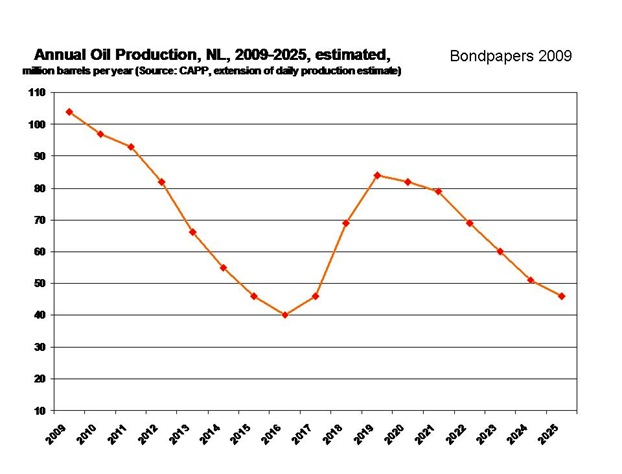
But hang on a sec.
Production for the current year – 2010 – is forecast by government officials at 86 million barrels.
Yessirree, that’s right. And production last year was 97 million barrels, again a figure CAPP had down for 2011.
In other words, the decline is about two years ahead of forecast. We also know that Hebron is behind schedule as well. How much behind schedule isn’t clear but it could be as much as a year later than the optimistic projections when the deal was announced or when it was re-announced.
So that period in the low-production trough could well be longer than CAPP’s forecast shows and the rise back up after Hebron could be much slighter.
In other words, when finance minister Tom Marshall admits that oil production is on the down-slide, he’s acknowledging that he already knows exactly what the implications are from that CAPP graph.
Let’s put it this way: this year, if oil averages around $83 a barrel as the provincial government believes, the total value of oil production offshore will be about $7.1 billion ($83 X 86 million)
In order for the provincial treasury to bring in the same royalty as it forecasts for this year - $2.1 billion – with production at 40 million barrels (i.e. the bottom of the trough) – oil would have to average $178 dollars per barrel in that year.
No sweat, says you, oil got to $147 a couple of years ago.
Yes it did, sez your humble e-scribbler. And look what happened right afterward. Oil didn’t average that price: it hit the number and then fell off quickly.
If that isn’t enough for you, consider that oil prices averaging $178 a barrel would be more than double the average price ($83) the provincial government forecast for oil this year.
So in order for the provincial government to do exactly what they are doing in 2010 in that mythical year we will call 2014 (remember everything is two years ahead of schedule) oil would have to be almost $180 a barrel all year.
For those keeping track, and just to show you how soon this is, just bear in mind that 2014 is one year beyond the period of continuing deficits forecast in the spring provincial government budget.
And just remember, as well, that this year the budget is forecast to be short by almost a billion dollars of cash.
Not only is there not enough of a cash reserve to cover that sort of a shortfall in 2014, there wouldn’t be enough cash in any secret government pockets to handle a deficit half that big.
And that’s without thinking of what tremendous pressures there’d be for higher wages and higher costs and higher priced everything else in a world where the price of oil doubled in a mere four years.
Yes, gentle reader, that little scenario assumed spending stayed where it is predicted to be in 2010. But as we all know, if oil prices were to shoot up that way, spending would have to go up just as radically. The only problem is that spending would shoot up but – as we know – the major source of provincial government revenue would only come in at the level for 2010.
When oil was forecast to be half the price.
Increase your spending dramatically while holding your revenue about the same.
That’s the definition of “unsustainable”.
-srbp-
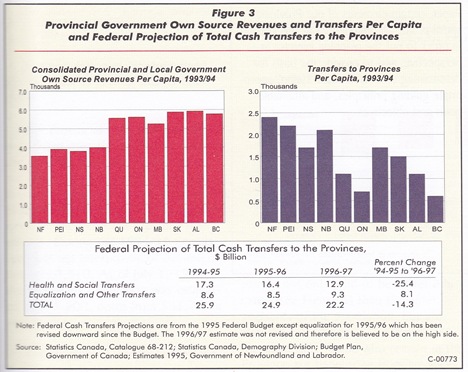
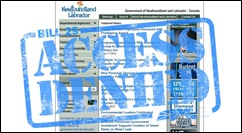


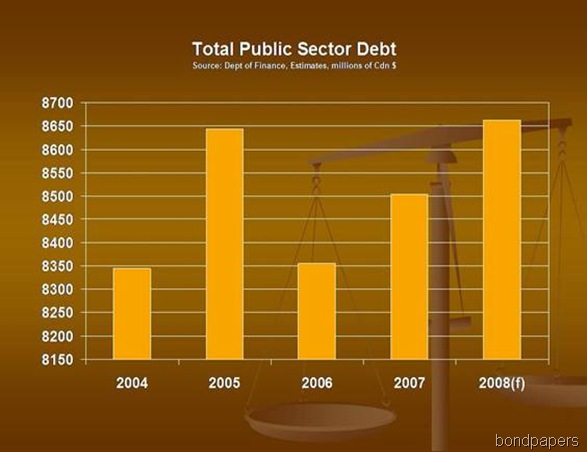 1. Reduce the public debt by 50% within 10 years. Beginning in the early 1990s, successive administrations restructured public borrowings to convert debt held in foreign currency. As a result, the current burden on the treasury is significantly reduced and uncertainty due to currency fluctuations has been all but eliminated.
1. Reduce the public debt by 50% within 10 years. Beginning in the early 1990s, successive administrations restructured public borrowings to convert debt held in foreign currency. As a result, the current burden on the treasury is significantly reduced and uncertainty due to currency fluctuations has been all but eliminated. 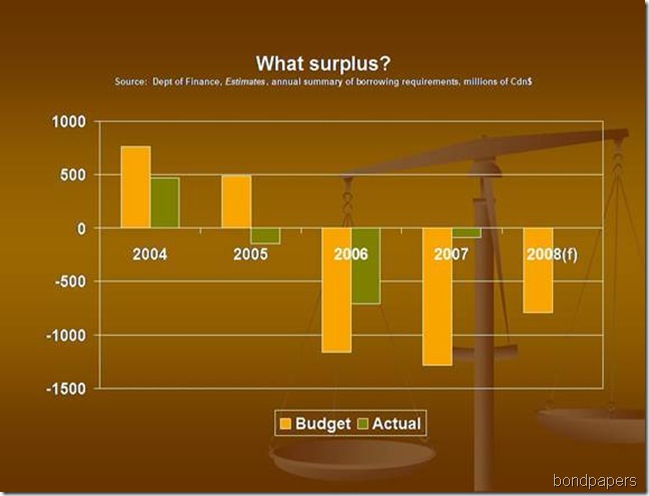 2. Balance the books, every year. Government surpluses in recent years have been built on the blind good fortune of astronomical oil prices. Those prices are an unreliable source of cash. On a cash basis, the provincial government has actually been in debt each year since 2005. That means new borrowing to add to the burden of public debt.
2. Balance the books, every year. Government surpluses in recent years have been built on the blind good fortune of astronomical oil prices. Those prices are an unreliable source of cash. On a cash basis, the provincial government has actually been in debt each year since 2005. That means new borrowing to add to the burden of public debt.